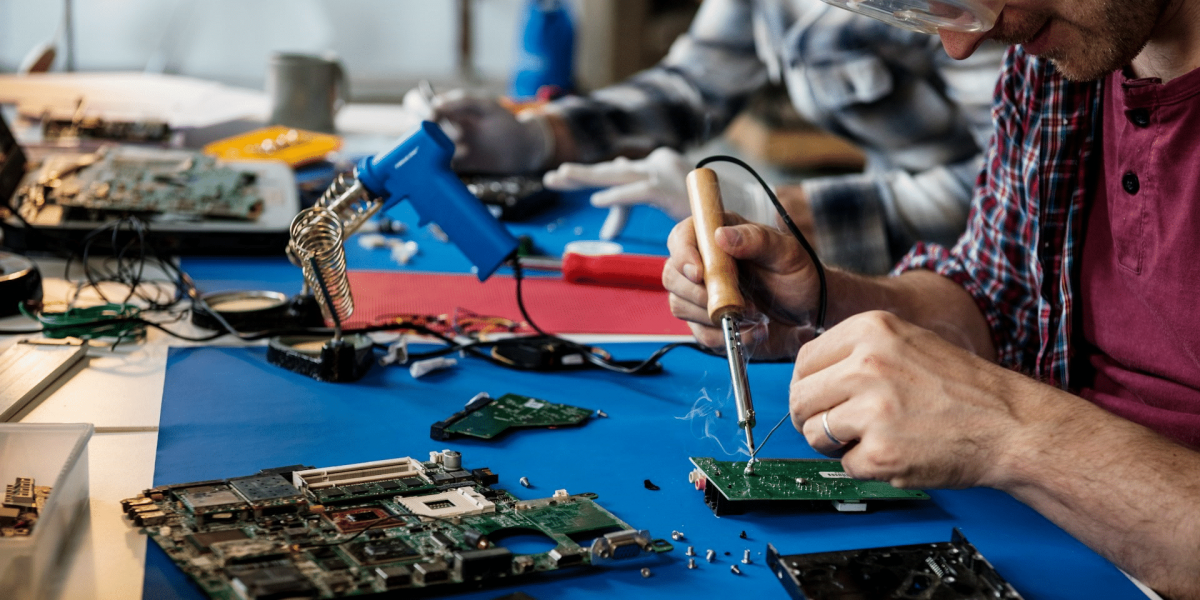The motherboard is one of the most important components in a computer, often referred to as the “backbone” of the system. It connects all the essential hardware, enabling them to work together efficiently. Yet, when building or upgrading a PC, many users focus more on the CPU, RAM, or graphics card, often overlooking the critical role the motherboard plays in performance and overall system functionality. Choosing the right motherboard can significantly impact your computer’s longevity, stability, and scalability. Here’s why it matters.
Understanding the Role of the Motherboard
Before delving into the specifics of what makes a motherboard good or bad for your needs, it’s important to understand its function. The motherboard serves as the central hub that connects all the internal components of your computer. It enables communication between the CPU, RAM, storage devices, graphics card, and other peripherals. It also houses essential power and data connectors that enable the motherboard to pass signals between components.
At its core, the motherboard determines the potential capabilities of your entire system. From how much memory you can add to the number of expansion cards you can install, the motherboard impacts your ability to customize and scale your system.
Key Factors in Choosing the Right Motherboard
1. Compatibility with Other Components
One of the first and most crucial considerations when selecting a motherboard is ensuring that it’s compatible with the other components in your system, particularly the CPU and memory.
- CPU Socket Type: Each CPU comes with a specific socket type. For instance, Intel CPUs typically use LGA (Land Grid Array) sockets, whereas AMD CPUs utilize AM4 or other socket variants. The motherboard you choose must support the socket type of your CPU. Without this compatibility, you’ll be unable to install the processor.
- Memory Support: Motherboards support specific types of RAM, such as DDR4 or DDR5, and have limitations on the maximum capacity and frequency of RAM they can handle. Before purchasing a motherboard, ensure it can accommodate the type, speed, and amount of RAM you plan to use.
- Expansion Slots and Ports: The number and type of expansion slots, such as PCIe (Peripheral Component Interconnect Express) slots, are crucial for adding components like dedicated GPUs, sound cards, network cards, or storage drives. If you plan on upgrading your system in the future or adding additional devices, be sure the motherboard has the necessary expansion options.
2. Form Factor and Size
Motherboards come in various form factors, each with its own size and feature set. The three most common motherboard form factors are:
- ATX (Advanced Technology eXtended): The most popular and widely supported size, offering plenty of room for expansion slots, RAM, and cooling solutions. ATX motherboards are ideal for full-sized desktop builds and are commonly used for gaming rigs or workstations.
- Micro ATX: Slightly smaller than ATX motherboards, offering fewer expansion slots but still capable of supporting a full range of hardware. Micro ATX boards are perfect for compact desktop builds, balancing size and expandability.
- Mini-ITX: The smallest form factor, designed for small form-factor (SFF) builds or compact PC cases. While they offer limited expansion options, Mini-ITX motherboards can still support high-performance components, making them suitable for custom, space-saving systems.
The form factor will largely determine the size of your PC case, so ensure that the case you choose can accommodate your motherboard. If you are planning to build a compact system, you’ll need a motherboard with a smaller form factor.
3. Chipset Features and Performance
The chipset is the heart of a motherboard, controlling communication between the CPU and other system components. There are two primary types of chipsets to consider:
- Consumer Chipsets: Found in mainstream motherboards, these are suitable for most users. Chipsets such as Intel’s Z series or AMD’s B series allow you to perform tasks like gaming, content creation, and basic productivity without major bottlenecks.
- High-End Chipsets: For enthusiasts, professionals, or overclockers, high-end chipsets like Intel’s X series or AMD’s X570 provide support for advanced features such as multi-GPU configurations, higher overclocking potential, and extensive connectivity options.
When selecting a motherboard, consider the chipset’s performance capabilities and whether they align with your intended use case. If you need to maximize your PC’s speed and overclocking potential, choose a motherboard with a chipset designed for that purpose.
4. Connectivity Options
Modern motherboards come with a variety of connectivity options that can enhance the overall performance and usability of your system. Here are a few key connectivity features to look for:
- USB Ports: Motherboards offer a range of USB ports, including USB 3.0, USB 3.1, USB-C, and USB 4.0. The more USB ports, the better for users who need to connect multiple peripherals simultaneously.
- Ethernet and Wi-Fi: If you plan to connect to the internet, make sure the motherboard has an Ethernet port for wired connections. Many modern boards also come with integrated Wi-Fi, offering a convenient wireless option without needing an additional network card.
- Audio and Video Outputs: Depending on your needs, you may require integrated audio or video outputs. While most gaming-focused users will rely on a dedicated graphics card, casual users or HTPC builders might prefer a motherboard with integrated graphics and high-quality audio.
- Storage Connections: Modern motherboards provide multiple options for connecting storage devices, including SATA (Serial ATA) ports for traditional hard drives and SSDs, and NVMe (Non-Volatile Memory Express) M.2 slots for faster solid-state drives. The latter offers significantly faster data transfer rates and is ideal for high-performance storage.
5. Future-Proofing and Upgradability
No one wants to build a computer that will become obsolete in just a few years. When selecting a motherboard, it’s essential to consider the future-proofing aspects, such as the ability to upgrade components without needing to replace the motherboard entirely.
Look for motherboards with features that allow for easy upgrades, such as:
- Support for Latest Technologies: Choosing a motherboard that supports the latest standards, such as PCIe 4.0 or 5.0, DDR5 RAM, and USB 4.0, ensures that your PC remains compatible with the latest hardware for years to come.
- Capacity for Expansions: As technology progresses, your needs might change. Ensure your motherboard can accommodate additional RAM, storage devices, or GPUs when necessary.
- Overclocking Potential: For users looking to push the limits of their system, selecting a motherboard with a good overclocking feature set will allow you to extract more performance from your components without needing to replace them prematurely.
Choosing the right motherboard is essential to building a computer that suits your specific needs, whether you’re gaming, content creation, or simply browsing the web. It influences your system’s performance, expandability, and longevity. The key factors to consider include CPU compatibility, memory support, form factor, chipset features, connectivity options, and future-proofing capabilities.
By taking the time to research and select the motherboard that best fits your requirements, you’ll ensure your PC is well-equipped to handle both current and future tasks, providing you with a reliable and high-performing system for years to come.









